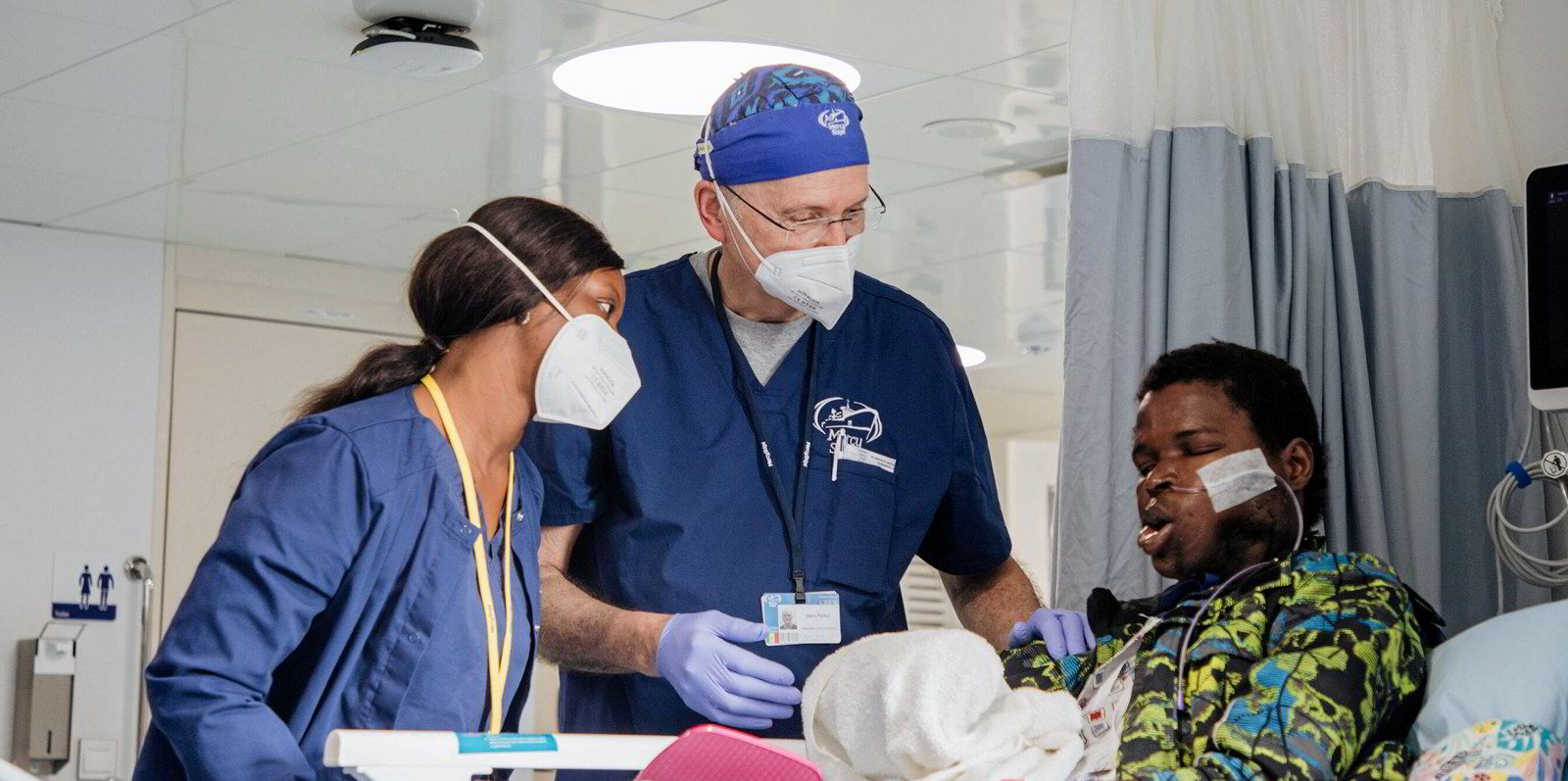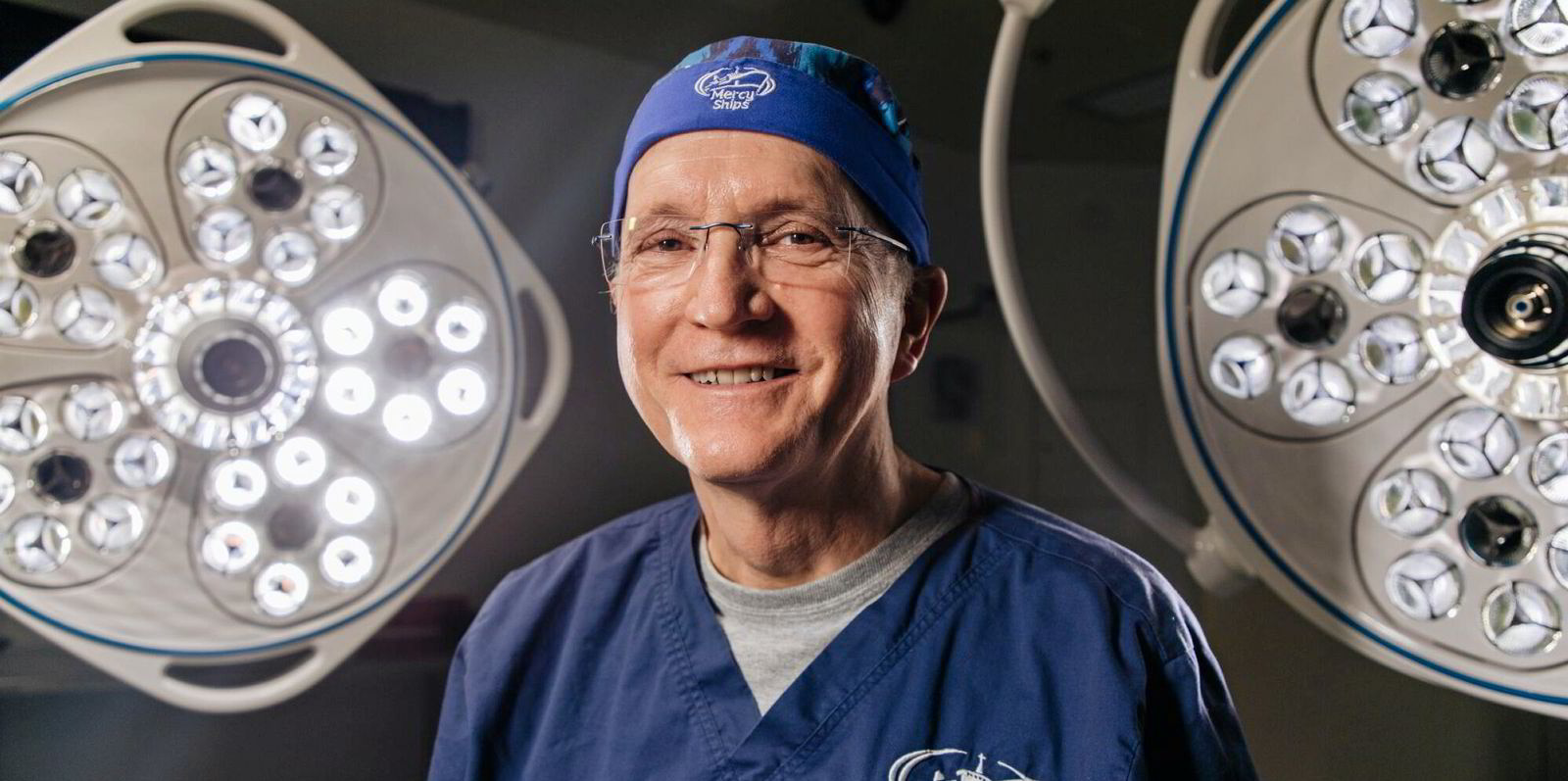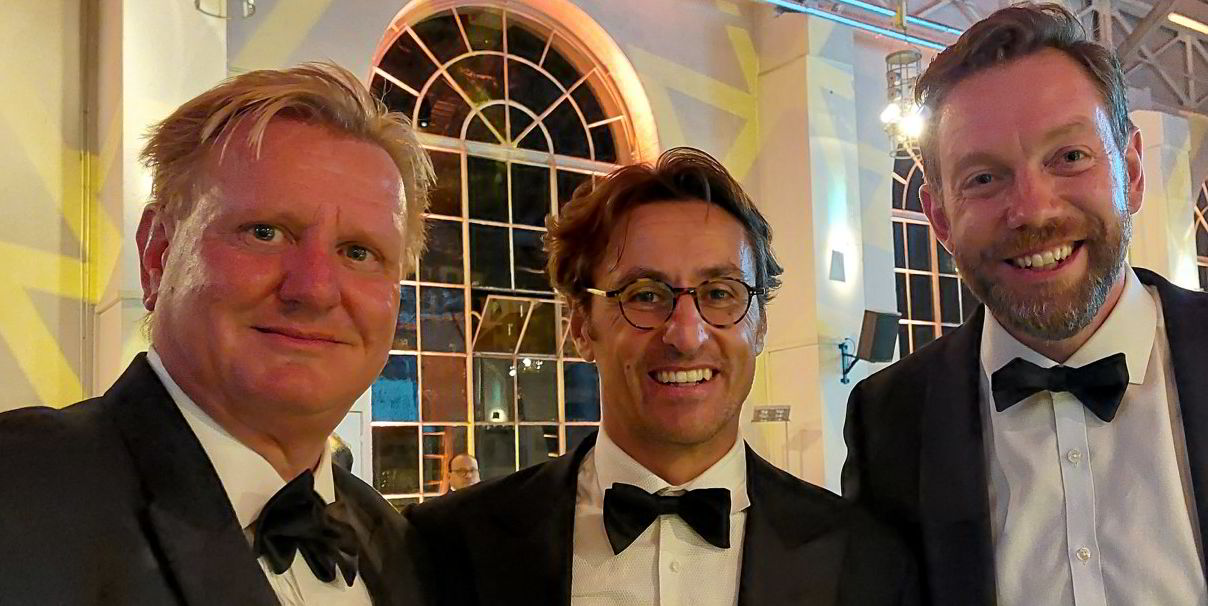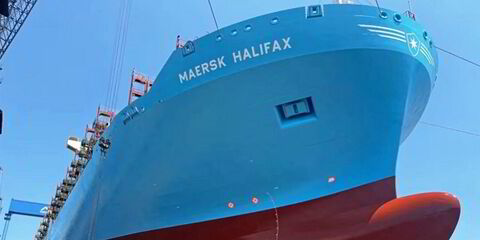Surgeon Dr Gary Parker and his family have spent as much time on ships over the past four decades as the most seasoned of seafarers.
The US oral and maxillofacial specialist has put his unique skills to work in the operating theatres of hospital ships that sail to countries where the need for healthcare is the greatest.
Now focusing exclusively on Africa, the Mercy Ships charity, which runs two converted hospital ships, has carried out more than 110,000 operations since it was set up in 1978. Parker has been present and working flat out for most of that time.
For most of his 37 years with Mercy Ships, Dr Parker has worked full-time on board the medically equipped ships that dock at port cities for months at a time. He met his wife, Susan, on a ship. Their two children were raised and educated on board.
Five days a week, Dr Parker and his colleagues carry out procedures for disability, disfigurement and disease for patients in Africa who have been previously unable to afford or get the expertise they need. Identified by the charity’s outreach workers, they are prepared to travel for days for treatment on the ships.
The conditions, and the tumours, are often similar to those seen in wealthier nations, but have been left to grow for years because of the lack of medical care, despite the best efforts of their families to get help, said Mercy Ships chief medical officer Mark Shrime.
He points out that one person dies every two seconds from a surgically treatable disease. But the impact of an operation to remove a tumour can be life-changing.
“I have a growing conviction that to overcome poverty, and the dehumanisation and the suffering that causes, people need hope that there can be a better tomorrow,” Dr Parker told TradeWinds from Freetown, Sierra Leone, where the 37,000-dwt Global Mercy (built 2021), the world’s largest civilian hospital ship, is currently docked.
“And so this is what keeps me at my post... people need real hope.”
Mercy Ships has been embraced by the shipping industry, with key players in the broking industry championing its work and running an annual Cargo Day fundraiser since 2016 that has raised some $7m.

The next event will be held on 8 November and is expected to be the most successful yet, with organisers hopeful of raising $3m. That represents $1m more than the record set in 2022 with the involvement of 84 charterers, owners, shipbrokers and traders.
Money is raised from a proportion of the commissions on done deals. The scale has increased every year with new organising committees set up in key shipping centres to build on the success of the Geneva-based origins of the event.
David Walker, the chairman of the committee in Geneva, said: “We believe this opportunity to contribute to the remarkable work of Mercy Ships is treasured by the shipping and trading community.”
For Parker, who spoke via video to a Mercy Ships gala in Geneva in September to mark the success of last year’s fundraiser, the money helps to save and rebuild lives and inspire communities.
He cites the case of a 14-year-old girl who had lost part of her mouth from an aggressive gangrenous infection called noma that attacks the soft tissues of the face.
“She just had her follow-up surgery today, she’s able to open her mouth, she’s got her lips, she’s got her nose, she’s got the cheeks — and she’s got a future in front of her.
“I admire the perseverance of people that just don’t give up. To be able to be part of the solution for them is wonderful.”
Now 71, the chief medical officer emeritus of the charity, has no plans to hang up his scalpel but continues to work on projects in host countries to improve skills and systems.
“There are days that are hard, but most of the days are good days,” he said.

The operating theatres on board the ships are some of the best that Shrime, an ear, nose and throat surgeon, has worked in during a medical career in the US.
He said he was inspired to join the charity after seeing a photographic exhibition in New York of the work on Mercy Ships. He volunteered to work on a vessel in 2008.
“I walked into the wards for the first time and saw these patients with the big tumours. Then came this realisation of, wow, without even knowing it, this is what I had been training for 15 years,” he said.
“Working with the ship… literally changed the direction of my life.”
Read more
- Mercy Ships gala: Two ships, $7m and a wedding proposal
- Shipping workers raise thousands from Lake Geneva cycle ride
- Medical charity raises record $1.7m from shipping deals
- Medical charity Mercy Ships sets date for Cargo Day fundraiser
- Largest civilian hospital ship starts full operations in 2023
- EPS’ Ducau bags top lot in Geneva Mercy Ships charity auction




